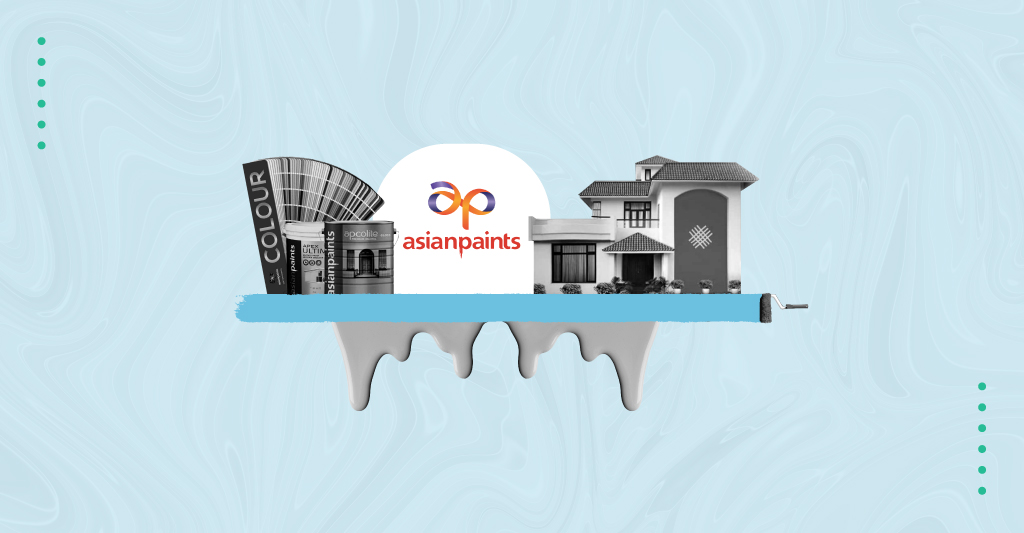Last Updated on Dec 2, 2021 by Ayushi Mishra
In 1942, when Indians were busy exhibiting civil disobedience via the Quit India Movement, 4 Mumbaikar friends were busy laying a foundation to what would become India’s biggest paint company. Let us take a look at 10 interesting facts about Asian Paints.
Table of Contents
Fact No. 1: Born in adversities but turned them to its advantage
In 1942, the WWII, Quit India movement, and Myanmar’s attack by Japan prompted the British to impose a temporary ban on imports, leaving India with very limited options: either Shalimar, the major player or expensive foreign brands. 4 friends Champaklal Choksey, Chimanlal Choksi, Suryakant Dani, and Arvind Vakil dared to turn the situation to their advantage and founded ‘Asian Oil and Paint Company Private Limited’.
Fact No. 2: Started in a garage and captured the globe
Like Apple, Microsoft, and a few other well-known companies Asian Paints was also started in a small garage in Gaiwadi, Mumbai. The founders had rented the garage for Rs. 75 a month.
Fact No. 3: Adopted an innovative packaging that painted a bright future
Paint used to get sold in tins. But, in 1945, Asian Paints ditched giant tins and started distributing paint in tiny packets. This out-of-the-box packaging method simplified and accelerated its distribution process. And with just 5 colours: black, white, red, blue, and yellow, Asian Paints earned a revenue of Rs. 3.5 lakh. By 1952, its annual turnover touched a whopping Rs. 23 cr.
Fact No. 4: Gattu, a paint mascot that changed India’s perspective of distemper
In 1954, Asian Paints started a contest inviting people to name a kid illustrated by India’s legendary RK Laxman. This mysterious kid was finally named ‘Gattu’, who became the face of the affordable Tractor Distemper. The campaign successfully changed India’s perspective that painting is a lifestyle choice and you need not wait for the peel to come off. Because of this, Asian Paints’ sales increased manifold over the next 4 yrs. It was also when Asian Paints’ first plant in Bhandup was established. It is now India’s largest paint company.
Fact No. 5: Climbed to the first position and tested international waters
From 1957 to 1966, Asian Paints focused on getting big clients like Balmer Lawrie, a British firm. In 1967, it became India’s leading paints manufacturer. A decade later, Asian Paints established its first international venture in Fiji. In 2004, Asian Paints made it to the list of Forbes Best Under a Billion companies in the world and was also conferred with ‘Sword of Honour’ by the British Safety Council.
Fact No. 6: Was the 1st private company to buy a computer
In 1970, Asian Paints bought a mainframe computer for Rs. 8 cr., becoming India’s 1st private company to ever buy a computer. Asian Paints used the computer to forecast demand based on data analytics. It was also the machine to improve its service levels across the supply chain. Eventually, few other companies also used computers but used them only for payroll and administration work.
Fact No. 7: Has remained a market leader for over 5 decades
As of September 2020, Asian Paints boasted a market share of about 39%. This is more than double the combined market share of 3 of its closest competitors namely Akzo Nobel, Berger Paints, and Kansai Nerolac. Its market cap in March 2021 was around Rs. 2.3 lakh cr.
Fact No. 8: Has rewarded its investors with massive returns
In January 2000, Asian Paints’ stock was trading at Rs. 16 and on 17 March 2021, the stock price was around Rs. 2,425. This translates to 15,056% growth returns (excluding dividends). You can track the performance of this stock on Tickertape’s Asian Paints stock page. Asian Paints has also been the only company to deliver a CAGR of 20% for 6 decades in the entire world.
Fact No. 9: In just 8 yrs, Asian Paints yielded Reliance tenfold returns
In January 2008, Ojasvi Trading owned by Reliance Industries had bought a 4.9% stake in Asian Paints. In 2016, this investment yielded Reliance 10x returns as Asian Paints’ market value crossed Rs. 1 lakh cr. In the same year, Asian Paints became the 4th biggest paint company by market capitalisation in the world.
Fact No. 10: Focuses on being future-ready to keep up with trends
Asian Paints has always been ahead of its time. It capitalised on TV commercials to advertise the brand. Its first-ever TV commercial aired in 1984. Later, between 1998 and 1999, Asian Paints established call centre operations and also got a website done.
- How To Analyse Stocks: Identifying Fundamentally Strong Companies - Nov 20, 2024
- Best ETFs in India: NSE ETF Lists of Gold, Debt & Equity ETFs (2024) - Nov 7, 2024
- Best Gold ETFs in India With Expense Ratio - Oct 29, 2024




